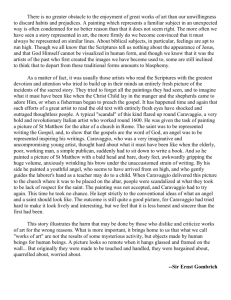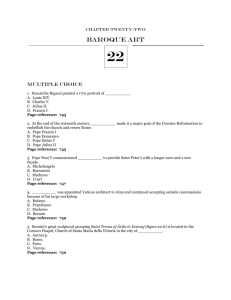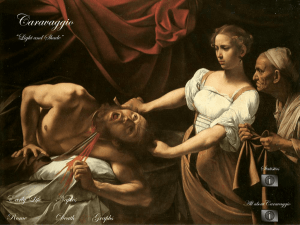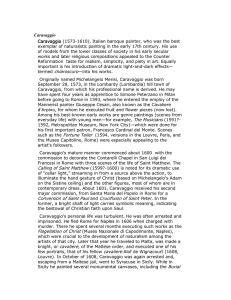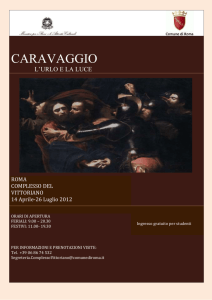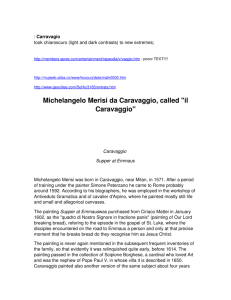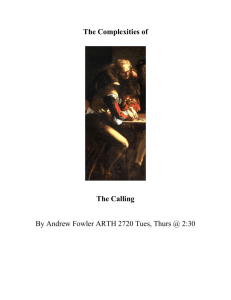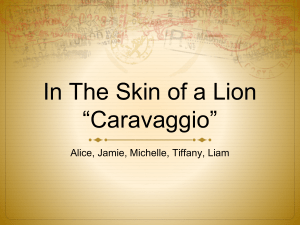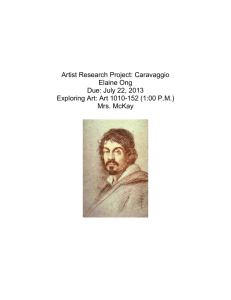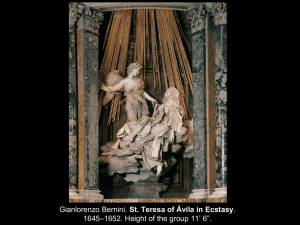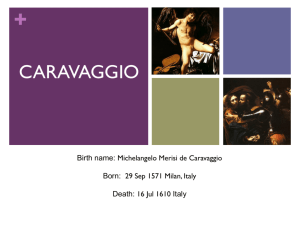Caravaggio final
advertisement
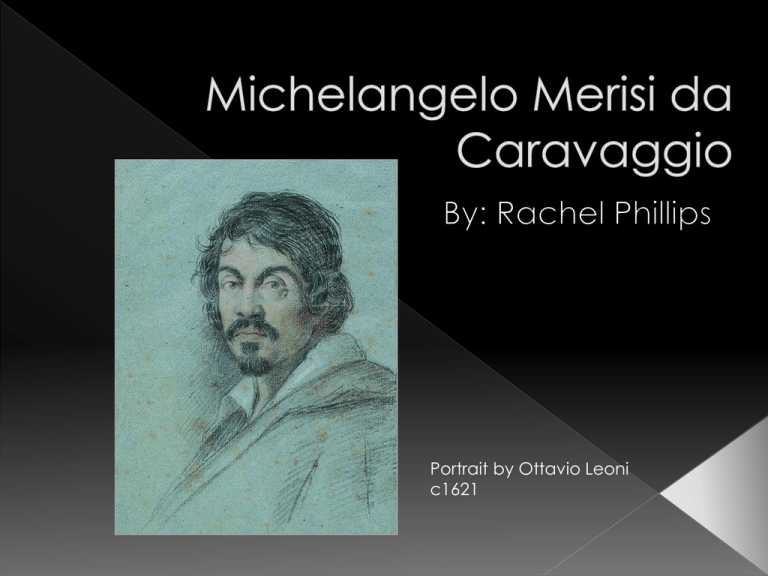
Portrait by Ottavio Leoni c1621 Born: 29 September 1571 in Died: 18 July 1610 Nationality: Italian Rome, Naples, Malta, and Sicily Not much is known is about early life Mother died 1590 Milan Trainer (Simone Peterzano) learned his skills from Titian Established painter Trained under SP for about four years Moved to Rome mid 1592 Worked for lesser-known painters Cesari- worked odd jobs paid such great attention to detail in this piece that a horticulture professor of modern day was able to notice and identify several common plant diseases of that time within the basket!!! Boy with a Basket of Fruit, ca. 1592 Boy Peeling Fruit, ca. 1592-93 Boy Bitten by a Lizard, ca. 1592-93 When still in Rome began selling his artwork and became more well known. Cardinal Francesco Maria Del Monte “intimate chamber-pieces Religious paintings: Church had all of the money. Wanted to attract more patronage Paintings were intense and brought viewer face-to-face with ideas Great brutality and emotion shown in new paintings. Sacrifice of Isaac 1599- becoming very well known and Was mostly liked. “Contarelli Chapel of Rome”: Martyrdom of St Matthew and Calling of St Matthew Commissioned by other churches to paint things such as : The Inspiration of St Matthew, The Entombment of Christ, and Madonna and Child with St Anne. Contarelli Chapel of Rome Martyrdom of St Matthew Calling of St Matthew Was always pretty violent, angry, and running away from punishments but this time murdered a man Ran away to Naples, where Romans couldn’t reach him. Colonna family: many church commissions (making him the most famous artist in area) Quickly fled to Malta to gain pardon from Alof da Wignacourt did not stay long; moved to Sicily Became popular in Sicily but decided to return to Naples, where he created his final paintings including “The Beheading of St John the Baptist” Mysterious disappearance. Intended on bringing last 3 paintings as a plea to Scipione Borghese by boat but never made it. Was thought to have died of fever. Works of art known as “The Impossible Exhibition” because paintings and pieces of art are spread out throughout the world! Bacchus "Caravaggio." Web. 1 Nov 2009. <http://en.wikipedia.org/wiki/Caravaggio>. Tarver, Simone. "Caravaggio." Tuscany: a Creative Journey. Web. 1 Nov 2009. <http://exploretuscany08.wordpress.com/research-assignment-artistsand-influences/caravaggio-simone-tarver/>. "Google Images." Google. Web. 1 Nov 2009. <http://images.google.com/imghp>. Web. 1 Nov 2009. <http://www.wga.hu/art/c/cesari/diana1.jpg&imgrefurl=>. Web. 1 Nov 2009. <http://www.wga.hu/html/c/cesari/index.html&usg=__qX7lVV2Uzqx64ilV 4OI5asc7h8=&h=1047&w=1336&sz=169&hl=en&start=6&um=1&tbnid=gr5X1_EjLg4LR M:&tbnh=118&tbnw=150&prev=/images%3Fq%3Dgiuseppe%2Bcesari%26 hl%3Den%26safe%3Doff%26um%3D1>. esaak, shelly. "Artists in 60 seconds: Michaelangelo Merisi da Caravaggio." About.com: art history. Web. 1 Nov 2009. <http://arthistory.about.com/cs/namescc/p/caravaggio.htm>. "12 Caravaggio masterpieces in Malta." Art in Malta. 14/Sep/2007. Web. 1 Nov 2009. <http://www.artinmalta.com/?p=62>. members.iinet.net.au/~ploke/Malta/caravaggio.html
